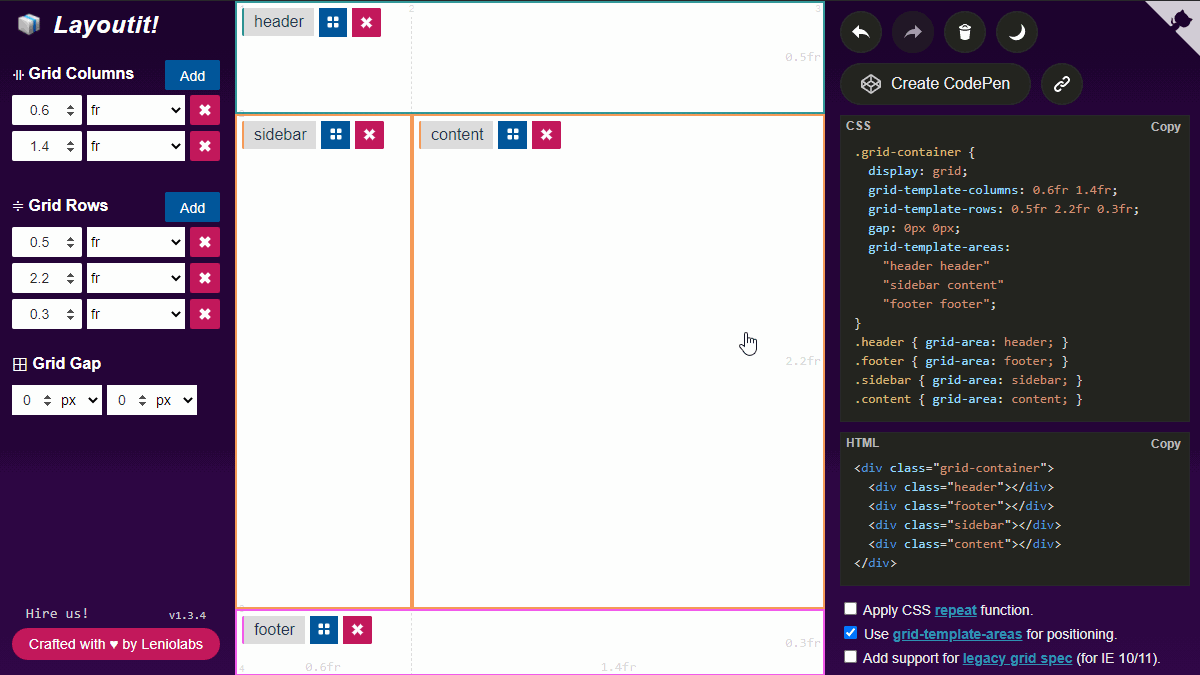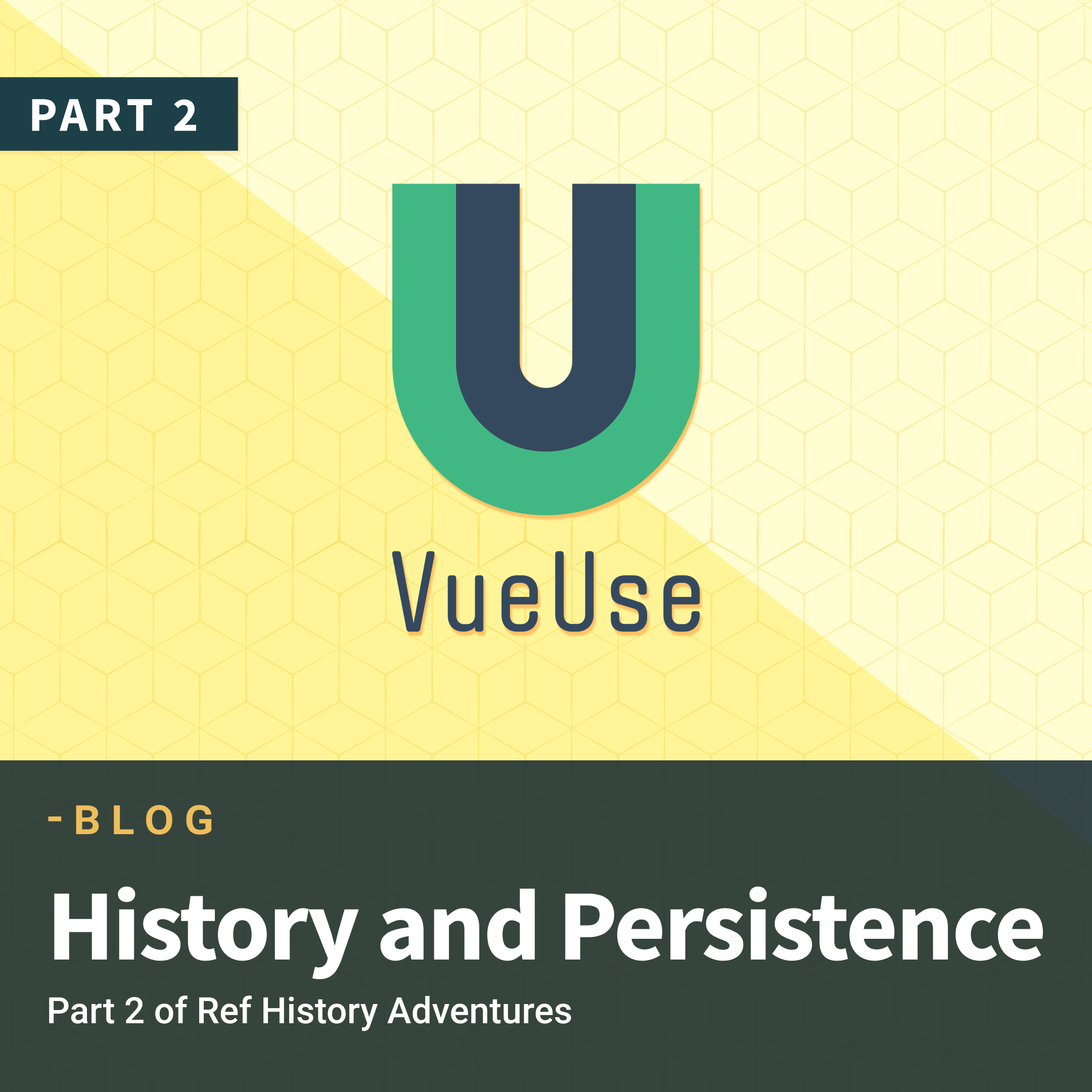In this post, first published in patak.dev, @patak_js explores the details behind implementing history support in Vue apps combining useRefHistory and useLocalStorage. This is the second chapter in the Ref History Adventures Series. If you didn’t read it yet, we recommend to read the previous article first. We hope you enjoy it, let us know what you think at @Leniolabs_.
Ref History Adventures
Part I → Ignorable Watch
Part II → History and Persistence
Part III → Mark Raw Optimization
History and Persistence
Let’s implement state persistence with history support in Vue 3. A good example of an app that properly handles this functionality is excalidraw. It keeps its state locally, you can reload the page and your design will not be lost. This app also supports undoing (Cmd+z) and redoing (Cmd+Shift+z). If you play with it you will notice that snapshots are committed at the end of dragging operations. If you move or scale a figure, only one snapshot will be created. All the intermediate states are considered a preview for these operations.
Pause
One possible option to control what is committed to our app history is doing the commits manually. At the end of every operation, we need to add a commit() call that will trigger a new snapshot. Another option is to watch for state changes and automatically push a commit. For this second strategy, we need a way to ignore changes that are done while doing an operation across user events like dragging. This is the scheme we will explore in this article.
We can implement automatic tracking of a ref history using VueUse’s useRefHistory. By default, useRefHistory uses flush: 'pre' so it will aggregate all the modifications that are done in the same “tick” and create for them a single snapshot. We reviewed why this is important in a previous post about Ignorable Watch. The default auto-commit behavior can be paused to enter previewing mode and resumed after the operation is finished. If the operation is canceled we can reset the state back to the last snapshot before this operation was started. If the operation was completed successfully, we commit the state to create a new snapshot.
const state = ref({ ... })
const {
undo, redo,
pause, resume,
reset, commit
} = useRefHistory(state)
// Sync operations
function rotateAround(figure,angle,point) {
// This operation may imply several
// sync modifications to the state,
// but they will be aggregated into
// a single snapshot because we
// are using the default flush: 'pre'
// ...
}
// Operations across user events
function onDragStart() {
pause()
// Modifications to the state won't
// generate snapshots
// ...
}
function onDragEnd() {
// Succesful operation, resume history
// tracking and commit the state
resume()
commit()
}
function onDragCancel() {
// We can also easily support
// cancelling the operation
resume()
reset()
}Resume

You can check Layoutit Grid for a production app using useRefHistory pause and resume to generate snapshots at the end of operations that spawn across user events. We are using this scheme when dragging the grid lines. And we are also using the same pattern when the user modifies certain input values like area names, using pause on focus and resume on blur. The user can play with the values, previewing the results that is properly reflected in the whole app but only one snapshot will be generated when the user goes out of the input.
Commit
To implement persistence, we can reach for VueUse’s useLocalStorage. We can create a new composable that combines useRefHistory and useLocalStorage, implementing both features for our app state.
import { ref, watch, onMounted } from "vue";
import {
useRefHistory,
useLocalStorage
} from "@vueuse/core";
export function useAppState(initial, {
storageKey = "app-state",
dump = JSON.stringify,
parse = JSON.parse,
...rest
}) {
const state = ref(initial);
const history = useRefHistory(state, {
dump,
parse,
...rest
});
const storage = useLocalStorage(
storageKey
);
onMounted(() => {
if (storage.value) {
// restore previous session value
state.value = parse(storage.value);
history.clear()
}
});
watch(history.last, () => {
// save last committed snapshot
const { snapshot } = history.last.value
storage.value = snapshot;
});
return { state, history, storage };
}In useRefHistory, the default for dump is a clone operation, and parse is a no-op. We change the defaults in useAppState so the snapshots are stringified values that we can directly store in local storage.
When the component where this composable is used is mounted, we check if there was a previous session state stored and set the state value. We also clear the history so the user can not undo to the app’s default initial value.
Then we watch history.last, a ref that tracks the last snapshot, to be able to store each snapshot in local storage when the history changes. This ref will not change if we are previewing changes in the middle of an operation where we have paused tracking, so there is no need for special handling of this case.
<script setup>
import {
useAppState
} from '../composables/useAppState.js'
const { state, history } = useAppState({
figures: \[]
}, {
deep: true
})
// ...
</script>In our App.vue component, we can use the composable and decide how to expose the state and the history to other components. Passing them by props or using provide and inject to avoid prop drilling. When we want to track deep changes in object or arrays, we need to pass { deep: true } to useAppState so useRefHistory will use deep watching internally.
VueUse provides building blocks that are meant to be combined when implementing your app logic. By creating new custom composables you can build a personalized toolbox that can be shared across your apps.





